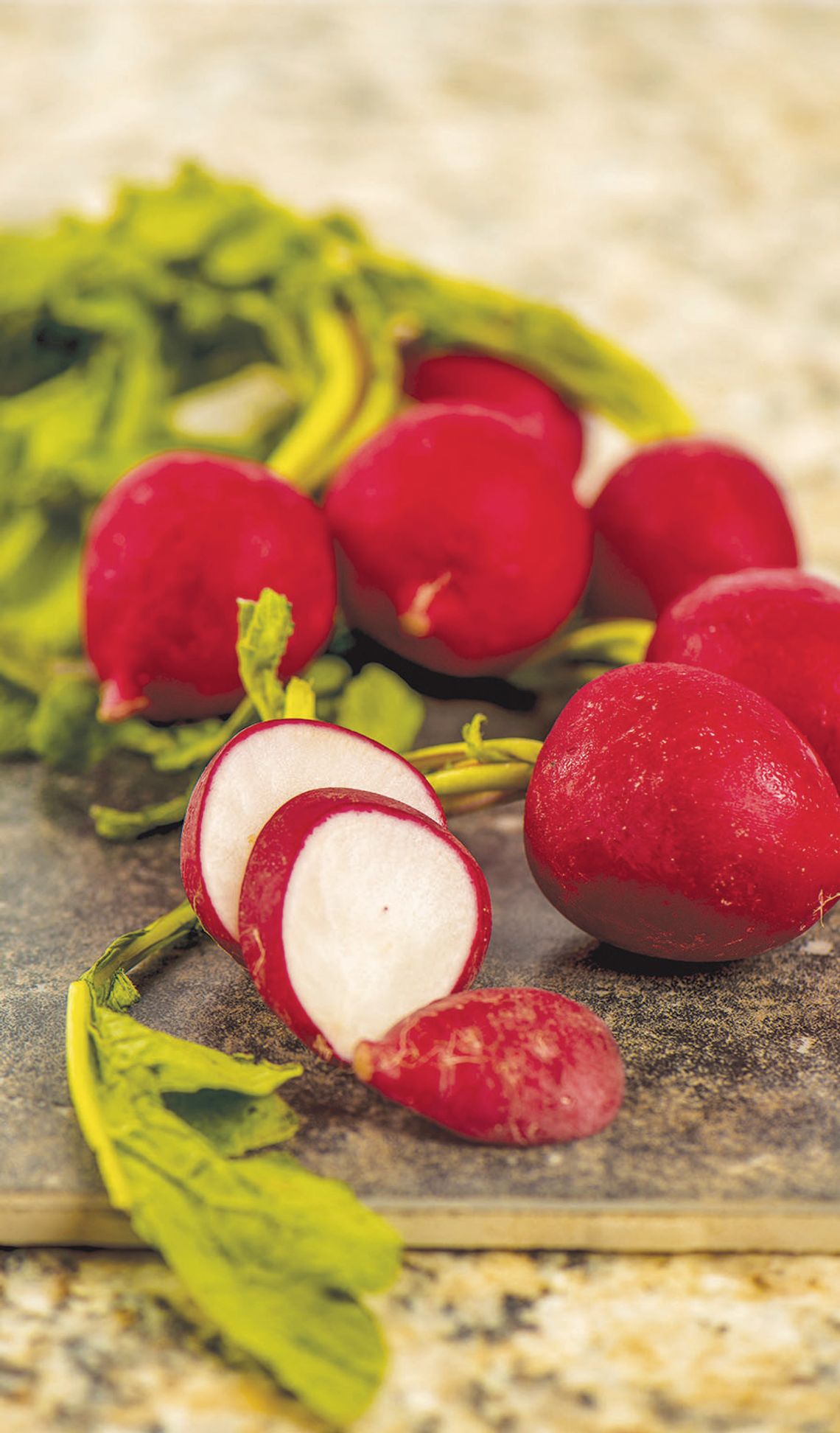December is a quiet time in our Central Texas backyard gardens. Most plants and trees are slowly going dormant for the winter. Due to the reduction in daylight, fall and winter planted crops grow more slowly, but it’s still a great time of year for leafy greens like spinach, lettuce, kale, collards and mustard greens. If you are looking for a little more variety out in your vegetable beds, it’s a super time of the year for planting radishes.
We can grow radishes seven months of the year, making them one of the hardiest of the backyard garden vegetables for our part of Central Texas. If you enjoy radishes, you can have a steady stream of radishes all fall and winter long by sowing seeds from September through the end of March. Radishes are interesting root vegetables that belong to the brassica family. They are cousins to mustard, broccoli, cabbage, cauliflower and all the cole crops.
The most common radishes are the small, round red salad types, but there are many different shapes, sizes and colors we can grow. Radishes can be round like ping pong balls, long and tapered similar to carrots, or stubby and cylindrical like breakfast sausages.
Radishes aren’t just red.
Varieties from around the world can be purple, violet, white, pink and green radishes and sometimes a combination of these colors, like “Watermelon” radishes that are pale green on the outside but vibrant magenta on the inside.
No matter the shape or color, all radishes are very easy vegetables to grow.
They germinate quickly and within a week seedlings appear. In about 30 days, small salad radishes will begin to push out of the soil signaling they are ready for harvesting. The larger the variety, the longer they take to mature.
Big radishes like the white daikon radishes need to be in the ground twice as long as the smaller radishes. Daikons are harvested after 60 days, which is still pretty quick for a crop.
Radishes don’t tolerate the warm weather. When it gets too warm they won’t produce a bulb or if they do, the root will be pungent. While this makes them too bitter to eat, you can use this to your advantage and use radishes as companion plants through the warmer seasons. Radishes and their bitter compounds can help ward off and repel pests and insects from other plants in your garden.
Radishes have a distinct earthy flavor. Some are more mild than others, and many are peppery and pungent. The flavor can vary between the varieties, but generally speaking the smaller the radish the less intense the flavor will be.
This flavor comes from a compound in the radish called glucosinolate, which is sulphery and gives the sharp odor and taste in radishes, mustards, wasabi and horseradish.
The longer the radish grows in the ground, the stronger the flavor tends to be. It can also intensify when the temperatures rise or when the soil conditions are poor.
There are a few things you can do to reduce that pungent, sharp taste. You can peel the outer layer where most of the glucosinolates are. Removing just a thin layer from the outside will eliminate a lot of the harshness.
You can slice the radishes and soak them for a few hours in ice water in the refrigerator. This removes some of the pungency from the radish while keeping them crisp.
The best way to get rid of the unpleasant compounds in radishes is to cook them. Chop or slice them and sauté in a little bit of butter or bacon grease. Once they soften, they are ready to eat. They are very mild and delicious with just some salt and fresh cracked pepper.
Try with a splash of vinegar or squeeze of lemon juice. Add some fresh winter herbs like rosemary, savory or thyme for more flavor.
You can also roast radishes in the oven.
Cut them into inch sized pieces and toss them with a little olive oil. Place them in your oven and roast them for 20 minutes at 350 degrees. You can roast them with other root vegetables like parsnips, carrots, and beets. Cutting your vegetables about the same size will help the different types roast evenly.
Both cooking methods make radishes very mild.
They will have a texture similar to potatoes, but they won’t be bland or starchy as potatoes. They will retain a nice and earthy, but mellow radish flavor. They are a nice low carb alternative to potatoes.
Radishes are also great pickled and fermented.
Fermentation is a way to preserve food and people have been fermenting vegetables for centuries.
It increases the stability of fresh foods and it makes foods safer to eat when there isn’t refrigeration.
Fermentation also enhances the flavors of vegetables and increases nutrients and probiotics.
If you have never fermented foods or pickled anything, radishes are good choices to experiment with for the first time since they are very inexpensive to grow, plus they make delicious foods. Search “quick pickle recipes for radishes” if you want fast vinegar-based pickles. If you want to try fermenting, look up “salt and brine fermenting” for easy instructions.
With 25 years of backyard gardening experience, Julie is a plant and nature enthusiast. She lives in Taylor and hosts the “Plow & Hose Organic Gardening in Central Texas” podcast and radio show that airs on KBSR, Black Sparrow Radio every Saturday and Sunday at 9 a.m.




